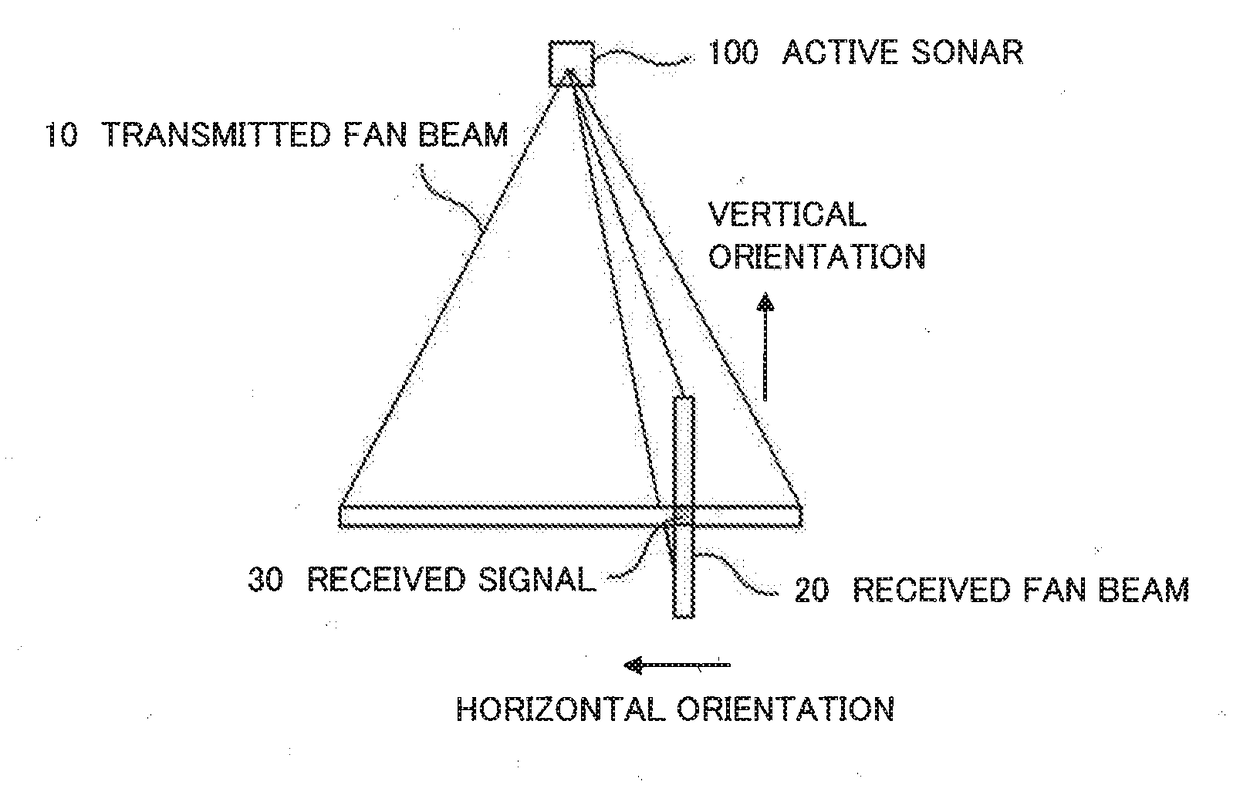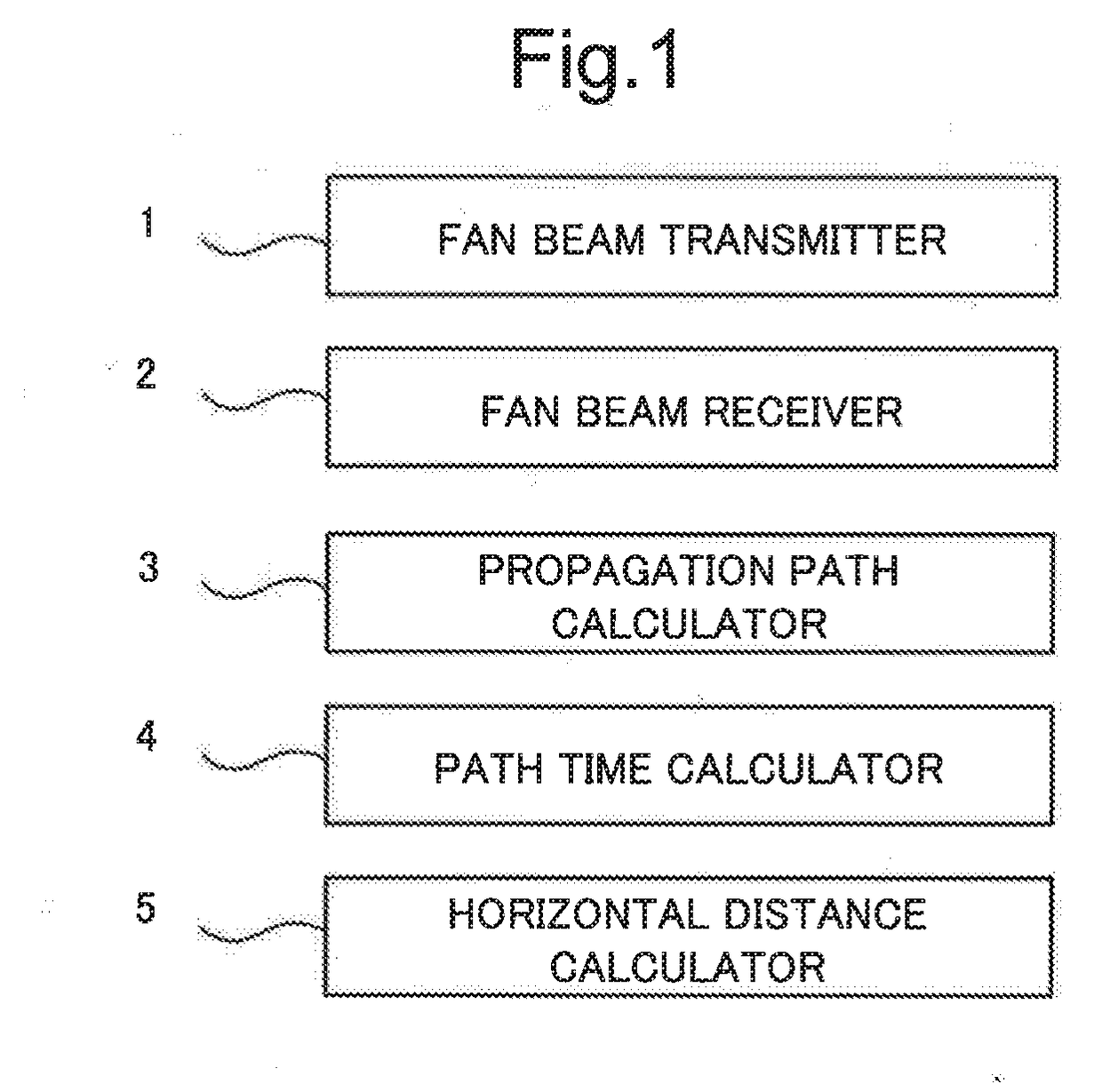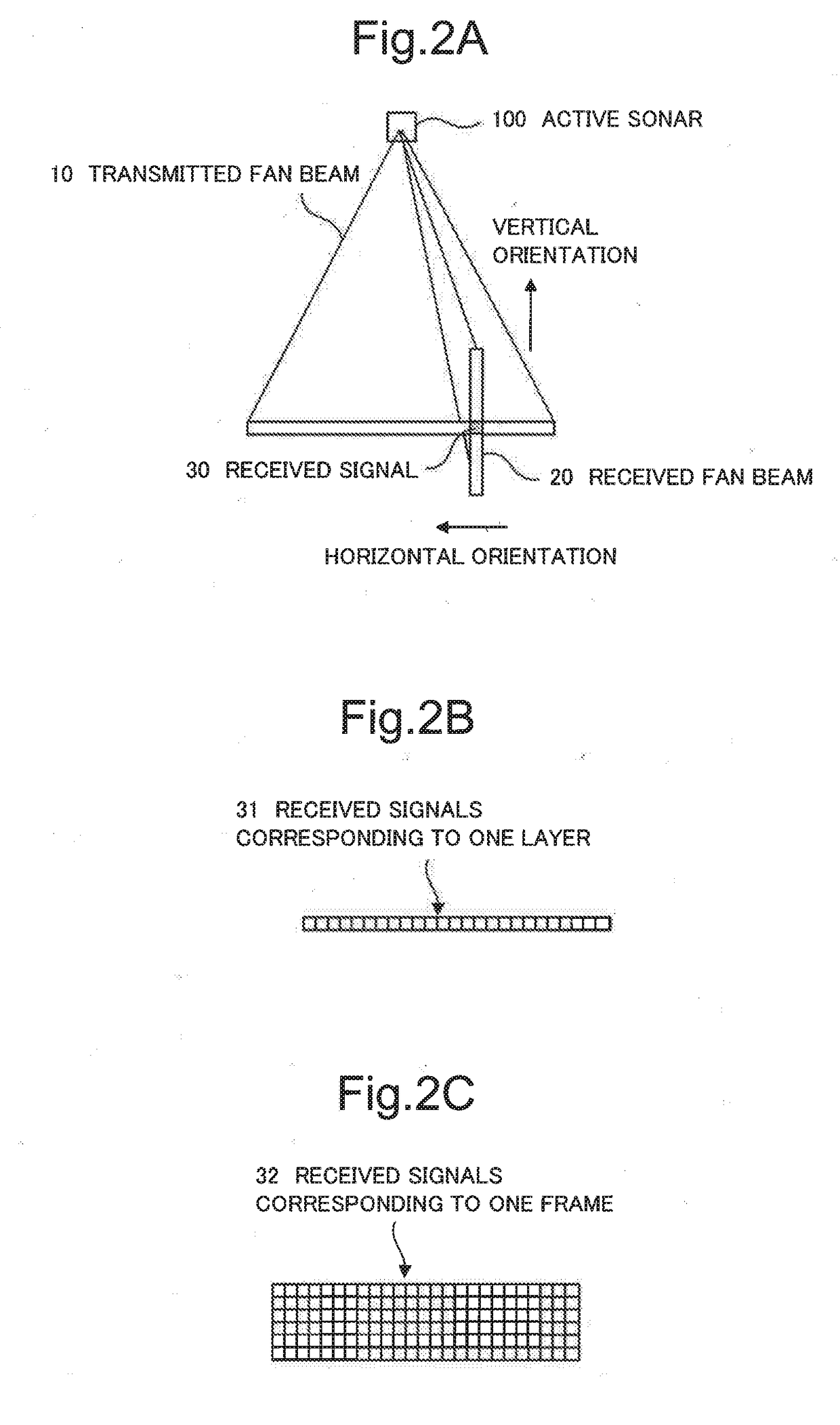Active sonar and control method for active sonar
a control method and active sonar technology, applied in the field of active sonar and a control method of active sonar, can solve the problems of difficult to acquire information in relation to a long-distance target, unclear vertical relationship between the elevation angle of the transmitted fan beam and the vertical relationship of the irradiation position at the target arrival, etc., and achieve high-quality information.
- Summary
- Abstract
- Description
- Claims
- Application Information
AI Technical Summary
Benefits of technology
Problems solved by technology
Method used
Image
Examples
first example embodiment
[0032]FIG. 1 is a block diagram illustrating the configuration of an active sonar according to this first example embodiment.
[0033]The active sonar includes a fan beam transmitter 1, a fan beam receiver 2, a propagation path calculator 3, a path time calculator 4, and a horizontal distance calculator 5.
[0034]The fan beam transmitter 1 transmits each of transmitted fan beams spreading widely in a horizontal direction and spreading narrowly in a vertical direction, with the elevation angle of each of the of the transmitted fan beams set to a corresponding one of mutually different elevation angles.
[0035]The fan beam receiver 2 receives each of received fan beams spreading widely in the vertical direction and spreading narrowly in the horizontal direction.
[0036]The propagation path calculator 3 calculates a propagation path of each of the transmitted fan beams based on the elevation angle of each of the transmitted fan beams and the profile of a medium. A typical medium is water (fresh...
second example embodiment
[0041]Before the description of an active sonar according to this second example embodiment, the outline of the cross fan beam method will be described below.
[0042]FIG. 2A, 2B, 2C, 2D are schematic diagrams for use in the description of the outline of the cross fan beam method. Firstly, as shown in FIG. 2A, an active sonar 100 transmits a transmitted fan beam 10. This transmitted fan beam 10 is wide in the horizontal direction and narrow in the vertical direction. The active sonar 100 transmits each of a plurality of the transmitted fan beams 10. Each transmitted fan beam 10 is transmitted with the orientation of the elevation-angle direction set to a corresponding one of mutually different orientations. Hereinafter, one of the transmitted fan beams will be also referred to as one layer. Next, the active sonar 100 receives an echo sound through a received fan beam 20. This received fan beam 20 is wide in the vertical direction and narrow in the horizontal direction. Under such a con...
third example embodiment
[0072]In this example embodiment, a specific and detailed configuration example of the active sonar will be described. FIG. 7 is a block diagram illustrating an example of the configuration of the active sonar according to this third present example embodiment. The active sonar includes a transmission unit 610, a reception unit 620, and a signal processing unit 630.
[0073]The transmission unit 610 includes a wave transmitter 611, a transmitted wave processing unit 612, a DAC 613, and a signal generator 614. Here, the DAC means a digital-to-analog converter.
[0074]The wave transmitter 611 converts an electrical signal into an acoustic wave signal, and transmits the acoustic wave signal into the water. The transmitted wave processing unit 612 cuts high frequency noise of a digital signal, and amplifies the electrical signal. The DAC 613 converts the digital signal output from the signal generator 614 into an analog signal. The signal generator 614 generates a digital waveform, such as a...
PUM
 Login to View More
Login to View More Abstract
Description
Claims
Application Information
 Login to View More
Login to View More - R&D
- Intellectual Property
- Life Sciences
- Materials
- Tech Scout
- Unparalleled Data Quality
- Higher Quality Content
- 60% Fewer Hallucinations
Browse by: Latest US Patents, China's latest patents, Technical Efficacy Thesaurus, Application Domain, Technology Topic, Popular Technical Reports.
© 2025 PatSnap. All rights reserved.Legal|Privacy policy|Modern Slavery Act Transparency Statement|Sitemap|About US| Contact US: help@patsnap.com



